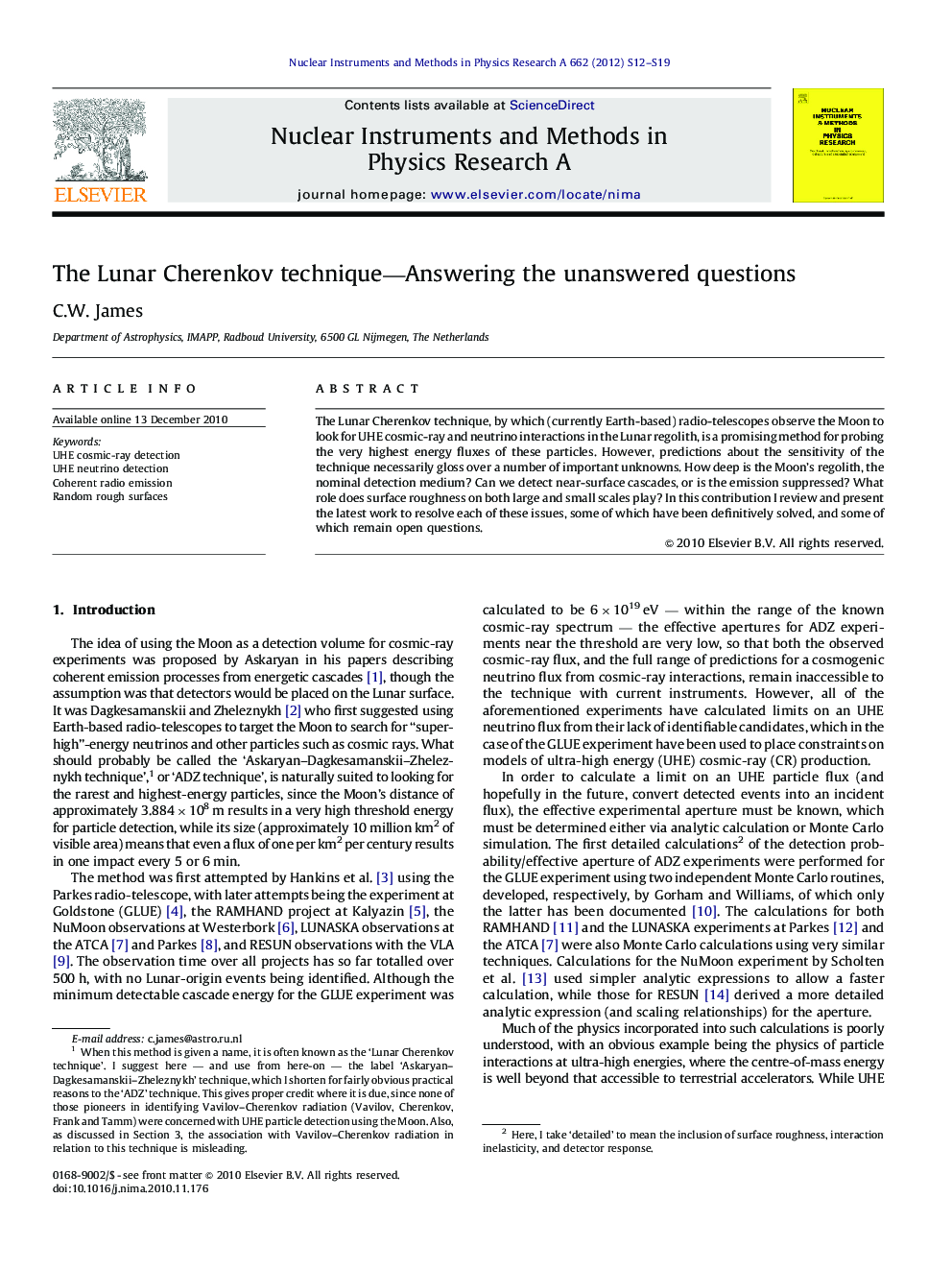| Article ID | Journal | Published Year | Pages | File Type |
|---|---|---|---|---|
| 1823912 | Nuclear Instruments and Methods in Physics Research Section A: Accelerators, Spectrometers, Detectors and Associated Equipment | 2012 | 8 Pages |
The Lunar Cherenkov technique, by which (currently Earth-based) radio-telescopes observe the Moon to look for UHE cosmic-ray and neutrino interactions in the Lunar regolith, is a promising method for probing the very highest energy fluxes of these particles. However, predictions about the sensitivity of the technique necessarily gloss over a number of important unknowns. How deep is the Moon's regolith, the nominal detection medium? Can we detect near-surface cascades, or is the emission suppressed? What role does surface roughness on both large and small scales play? In this contribution I review and present the latest work to resolve each of these issues, some of which have been definitively solved, and some of which remain open questions.
